
Hunting and fishing clubs
La Mauricie National Park
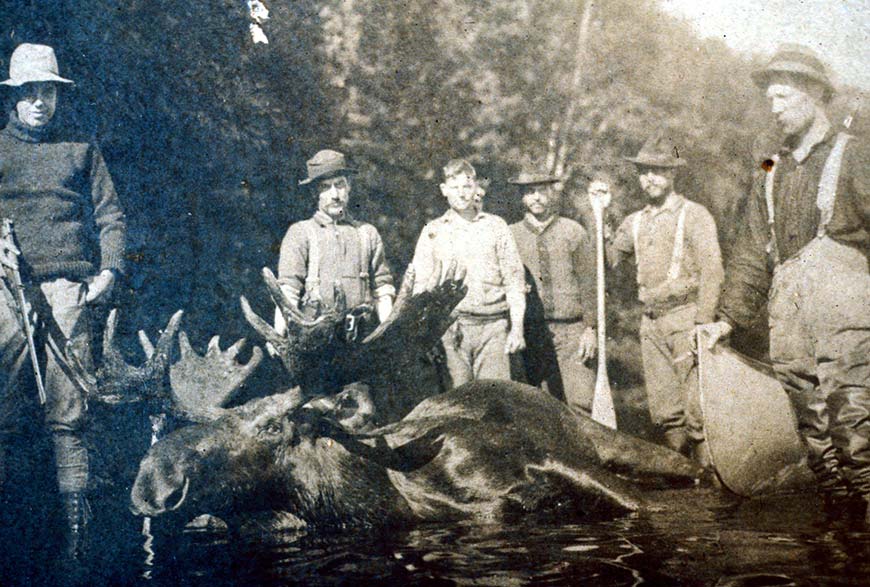
Long before the creation of La Mauricie National Park in 1970, the area was known for its great beauty and natural resources. As the logging industry operated at full capacity, another clientele developed on site. When the park opened, the region had 16 active hunting and fishing clubs. Among these were three main clubs: the Shawinigan Club (1883), the Laurentian Club (1886) and the Commodore Club (1905).
For over a century, these clubs played their own role in protecting wildlife by preventing its overexploitation. Nevertheless, the aquatic ecosystem was altered from fishing with baitfish and fish stocking.
Traces of this era still linger throughout the park whether in Domaine Wabenaki-Andrew or inside the place names of several lakes. For example, Parker Lake owes its name to William Henri Parker, founder of the Laurentian Club in 1886.
1. A select clientele
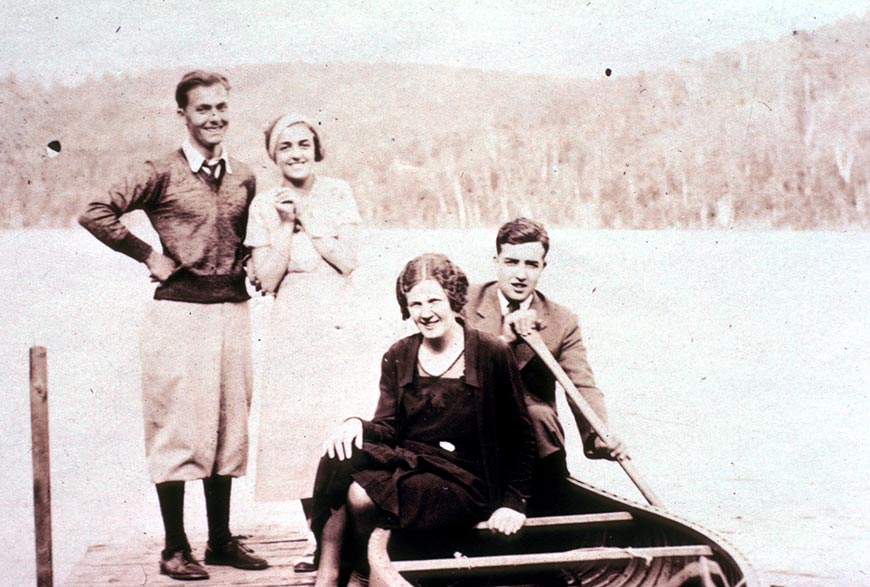
Hunting and fishing clubs were private, so their territory was reserved exclusively for use by their members. Their main clientele consisted of English-speaking Canadians and Americans. You had to be a politician, banker, successful businessman or wealthy individual since membership dues were quite high at the time. For example, to be a Laurentian Club member, you needed to pay $135 per year in 1938 and $250 in 1961.
Influential members included Sir Wilfred Laurier, the Canadian Prime Minister, who was a member of the Shawinigan Club and even the Kennedy family who had been members of the Laurentian Club since the 1920s.
2. Celebrating local expertise
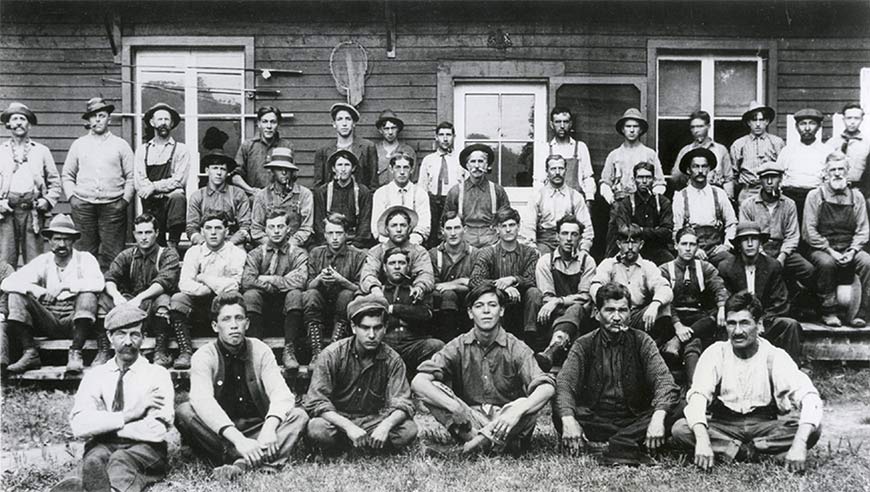
While most clients came from outside the region and even the country, most employees were local residents hired as guides, cooks or maids.
A guide was considered a forest specialist whose job was to ensure his clients enjoyed the forest’s beauty and pleasures, while ensuring their comfort and security. Indigenous guides, in particular the Odanak, were known for their near-perfect regional knowledge and were held in high regard by clients. For this reason, the Laurentian Club often matched up Canadian and Indigenous guides.
According to members, trips could last from two to three weeks.
It was an honour to be a guide for this prestigious clientele, but also a hard job! Guides had to carry canoes during portages, prepare meals, pitch camps for the night, light stoves, grease members' boots and serve evening drinks and cigarettes. They also had to gut member-caught trout and transport spare linens, food, hunting and fishing equipment, etc. In addition to shovelling roofs in winter, they also had to manage ice and firewood transportation.
In the Laurentian Club around the 1930s, a guide, working from 7 am to 6 pm, earned 2$ per day.
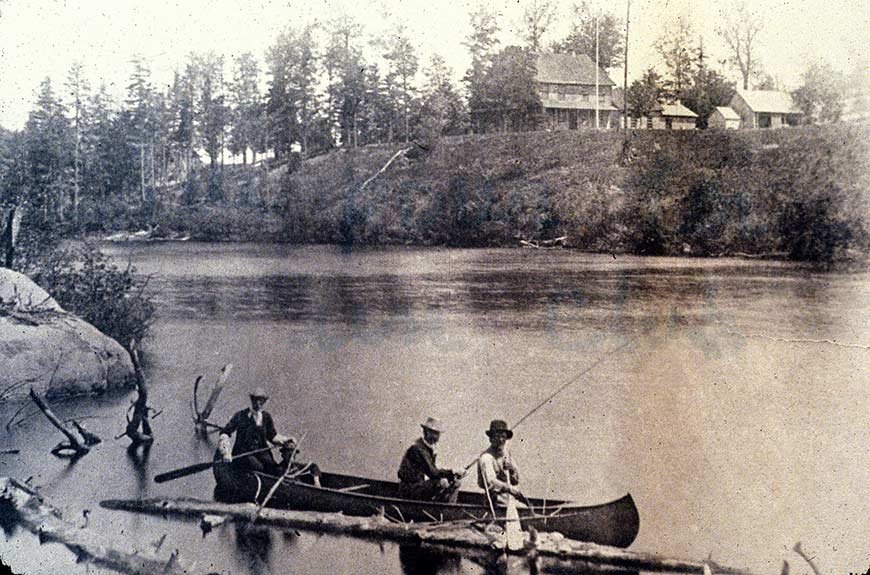
3. The Laurentian Club
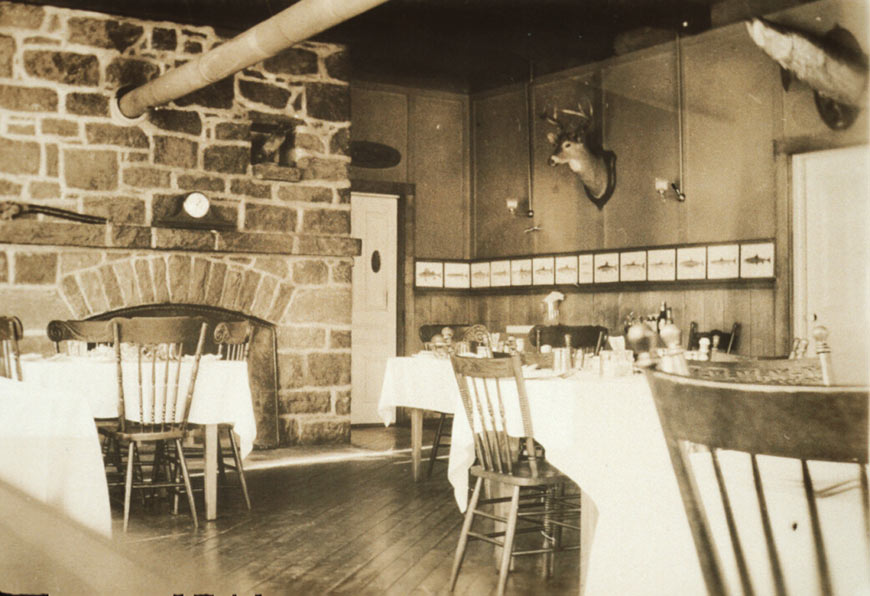
Founded in 1886, the Laurentian Club occupied a vast area, including the northern part of Des Cinq Lake, Édouard Lake and La Pêche Lake. In the La Pêche Lake area alone, the club included a dozen buildings (Canadian and Indigenous guide camps, wash house, dining area, manager house, etc.) and a huge vegetable garden. The Édouard Lake area contained another small "village" of nearly a dozen buildings.
Throughout its history, the Laurentian Club injected over a million dollars into the regional economy through wages and various expenses. Over the years, membership varied between 50 and 300 members.
To this day, two buildings attest to the Laurentian Club's history: Chalet Wabenaki and Maison Andrew.
Built between 1886 and 1914, the Wabenaki is the oldest park building. In the Atikamekw language, Wabenaki means “white dawn” (Waban) and “land” (Aki). At the time, it housed the kitchen and members’ dining room. It was also a place where members gathered after meals to enjoy an evening by the fireplace.
Maison Andrew was named after Alex Andrew, club manager from 1920 to 1930. He lived there with his wife, and the house served as a welcome station for members and as a “human resources office” where employees received their pay.
Interesting facts
- The Laurentian Club manager’s house, now Maison Andrew, was designed by Montréal architects in neo-Queen Anne style.
- Founded in 1663 by and for the working class, the Maréchal Club stood out from other clubs.
- Several clubs used and improved logging roads to facilitate access for their members.
Related links
- Date modified :